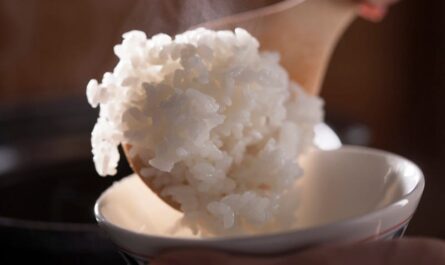When it comes to crafting the perfect sushi, one of the most crucial elements is the rice. The debate of imported vs domestic sushi rice is a significant one among sushi enthusiasts and chefs alike. Both types of rice bring unique qualities to the table, and understanding these differences can elevate your sushi-making experience. In this article, we will explore the characteristics, flavors, and benefits of both imported and domestic sushi rice to help you make an informed choice.

What is Sushi Rice?
Sushi rice, also known as ‘shari’ or ‘sumeshi,’ is a specific type of rice prepared for sushi dishes. It is typically short-grain rice seasoned with a mixture of vinegar, sugar, and salt. The seasoning gives it a unique taste that complements the flavors of fish and other ingredients used in sushi.
Characteristics of Imported Sushi Rice
Imported sushi rice is often considered the gold standard in sushi making. This rice is usually sourced from Japan, where it has been cultivated and perfected over centuries. The most popular varieties are Koshihikari and Sasanishiki, known for their superior texture and flavor.
Flavor Profile
Japanese sushi rice is renowned for its slightly sweet flavor and sticky texture, which makes it ideal for molding into sushi rolls and nigiri. The grains are plump and shiny, offering a visually appealing presentation.
Quality and Consistency
The consistency and quality of imported sushi rice are often unmatched. Japanese farmers employ meticulous growing and harvesting methods, ensuring each grain is perfect for sushi preparation.
Characteristics of Domestic Sushi Rice
Domestic sushi rice, typically grown in the United States, has gained popularity due to its accessibility and affordability. Varieties like Calrose and Botan rice are common choices, offering a more budget-friendly option for sushi lovers.
Flavor Profile
While domestic sushi rice may lack the intricate flavor of its imported counterpart, it still offers a pleasant taste suitable for everyday sushi making. The grains are slightly less sticky but still hold together well when cooked properly.
Availability and Cost
One of the main advantages of domestic sushi rice is its wide availability and lower cost. This makes it an attractive option for home cooks and restaurants looking to create delicious sushi without breaking the bank.
Comparing Nutritional Values
Both imported and domestic sushi rice provide a good source of carbohydrates, essential for energy. However, the nutritional content can vary slightly based on the variety and growing conditions. You can learn more about the fiber content of sushi rice and how it contributes to a balanced diet.
Environmental Impact
The environmental impact of rice production is an important consideration. Imported sushi rice often involves longer transportation distances, contributing to a higher carbon footprint. On the other hand, domestic sushi rice supports local agriculture, potentially reducing environmental impact.
Expert Opinions
Many sushi chefs prefer imported sushi rice for its authentic taste and texture, which they believe is essential for high-quality sushi. However, some chefs appreciate the innovation and sustainability of domestic sushi rice, incorporating it into their menus with great success.
Choosing the Right Rice for You
The choice between imported and domestic sushi rice often comes down to personal preference and priorities. Consider factors like flavor, cost, availability, and environmental impact when making your decision.
How to Cook Sushi Rice Perfectly
Regardless of your choice, cooking sushi rice to perfection is key. Ensure you rinse the rice thoroughly to remove excess starch, and follow cooking instructions carefully to achieve the desired sticky texture.

Frequently Asked Questions
1. Can I use regular rice for sushi?
Using regular rice for sushi is not recommended as it lacks the necessary stickiness and flavor profile. Stick to short-grain rice for the best results.
2. Is imported sushi rice worth the extra cost?
For sushi enthusiasts who value authenticity and superior flavor, imported sushi rice is often worth the investment.
3. How do I store sushi rice?
Store uncooked sushi rice in a cool, dry place, and keep cooked rice in an airtight container in the refrigerator for up to a week.
For more information on different types of rice, you can visit this guide on Real Simple.
This article contains affiliate links. We may earn a commission at no extra cost to you.




